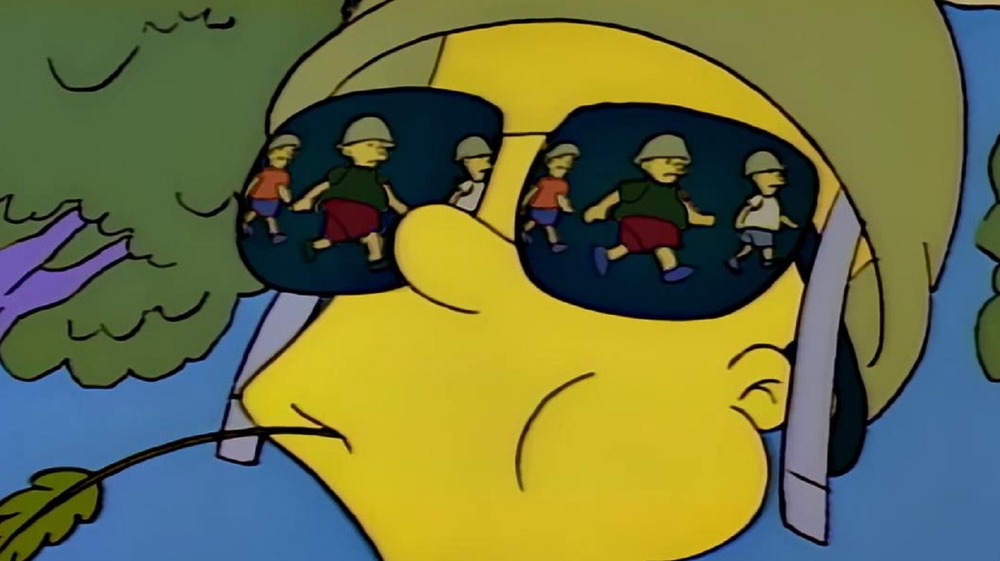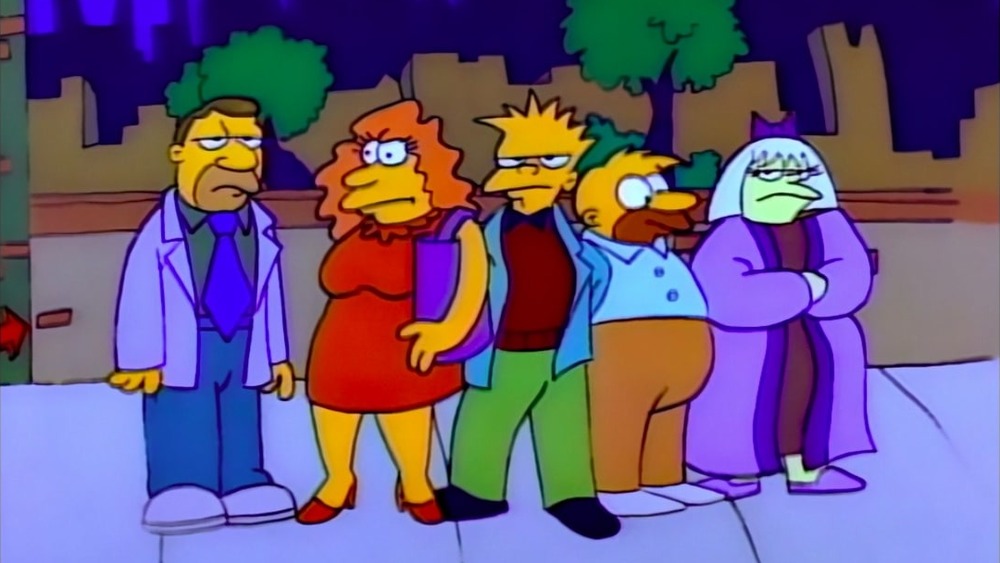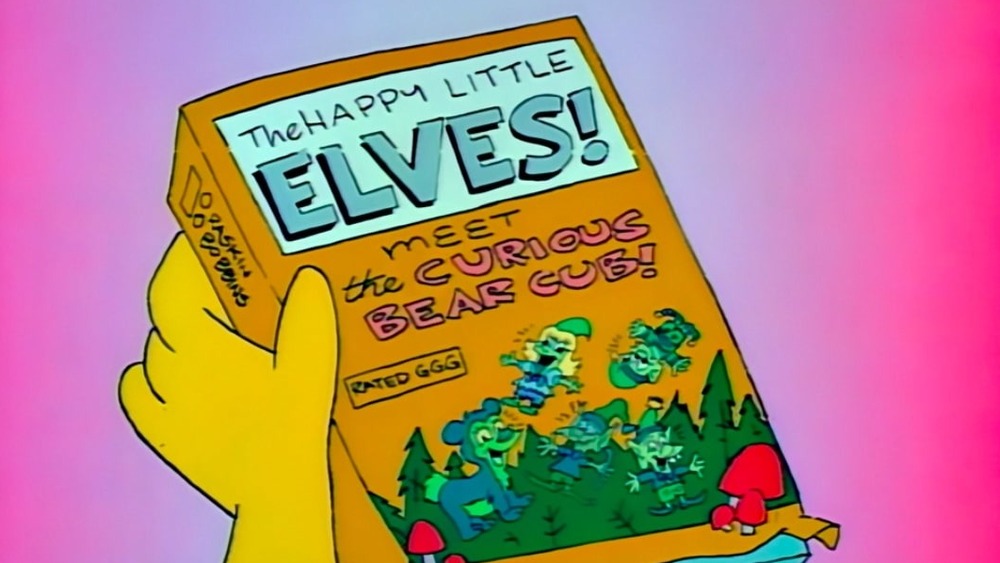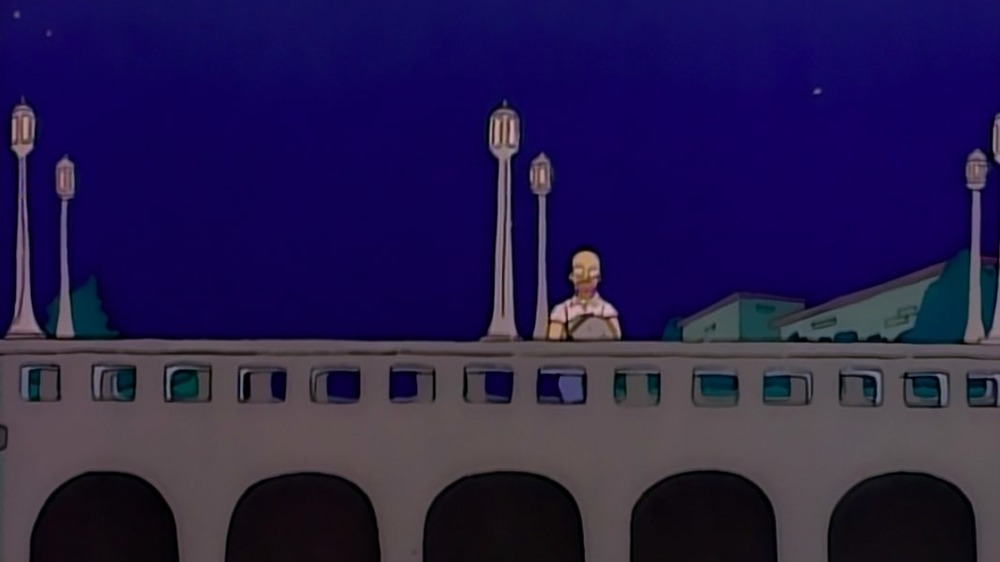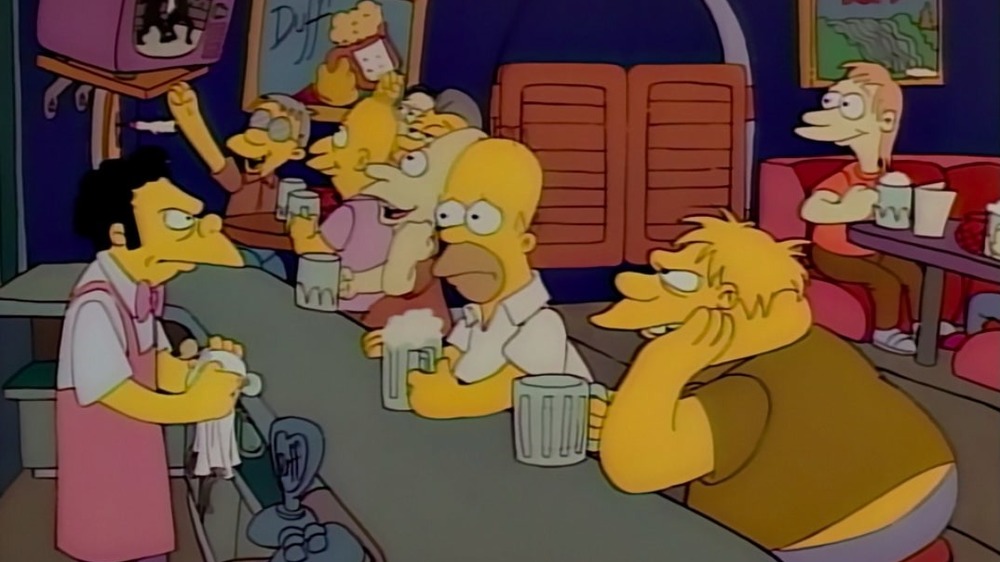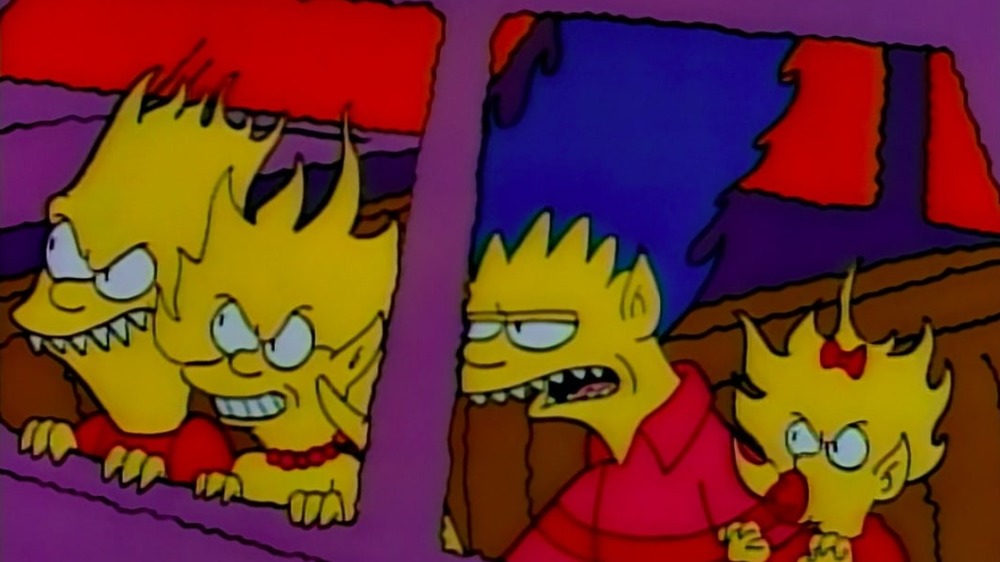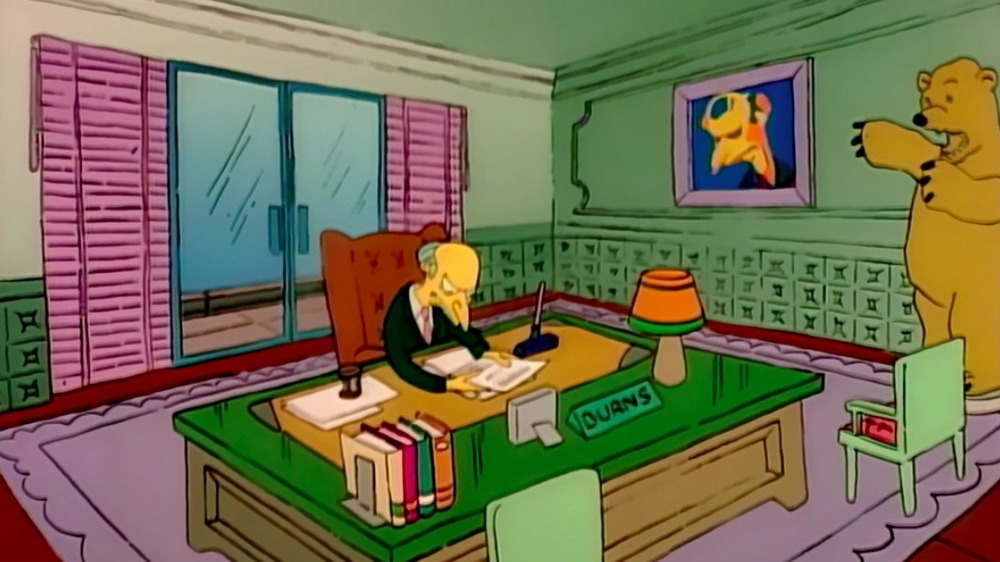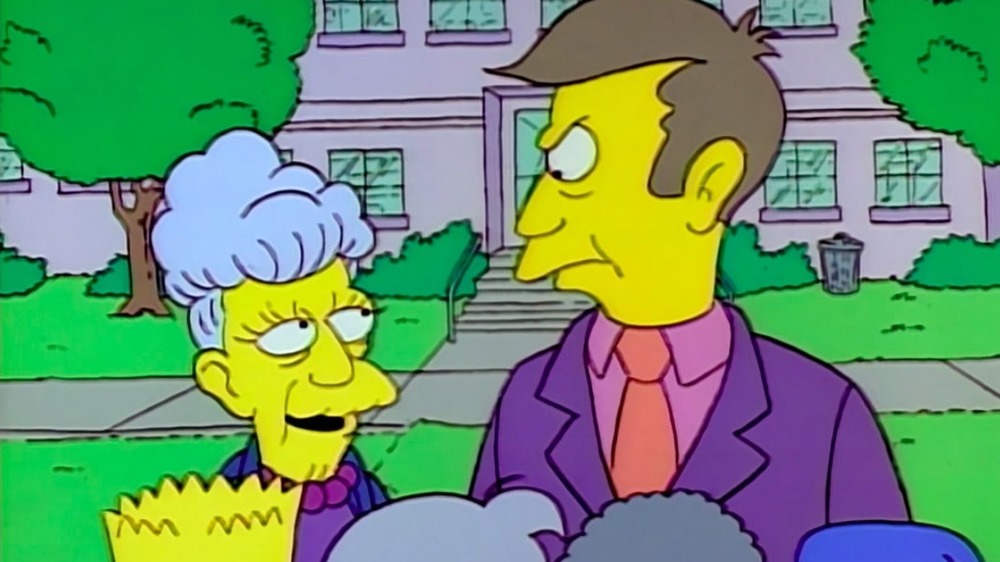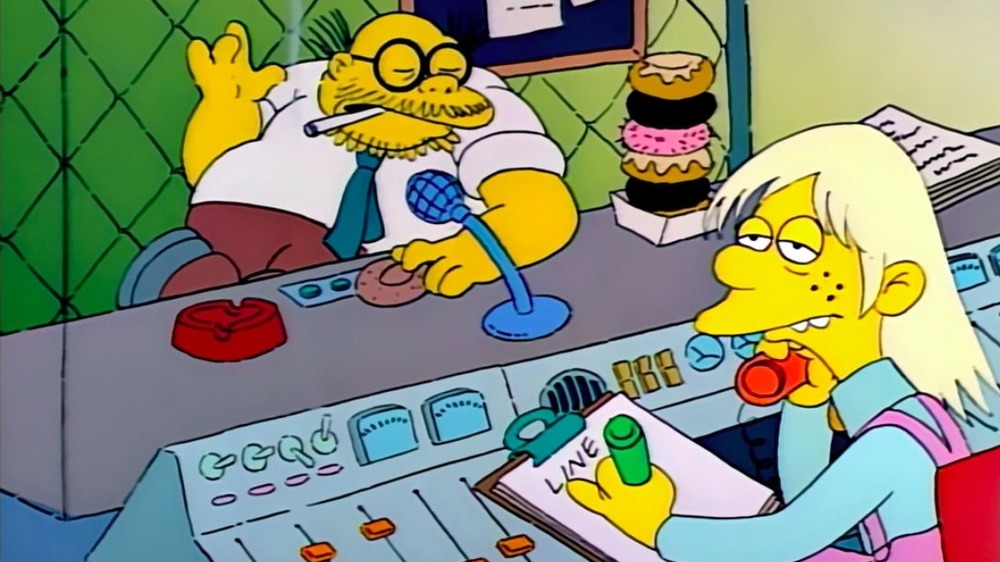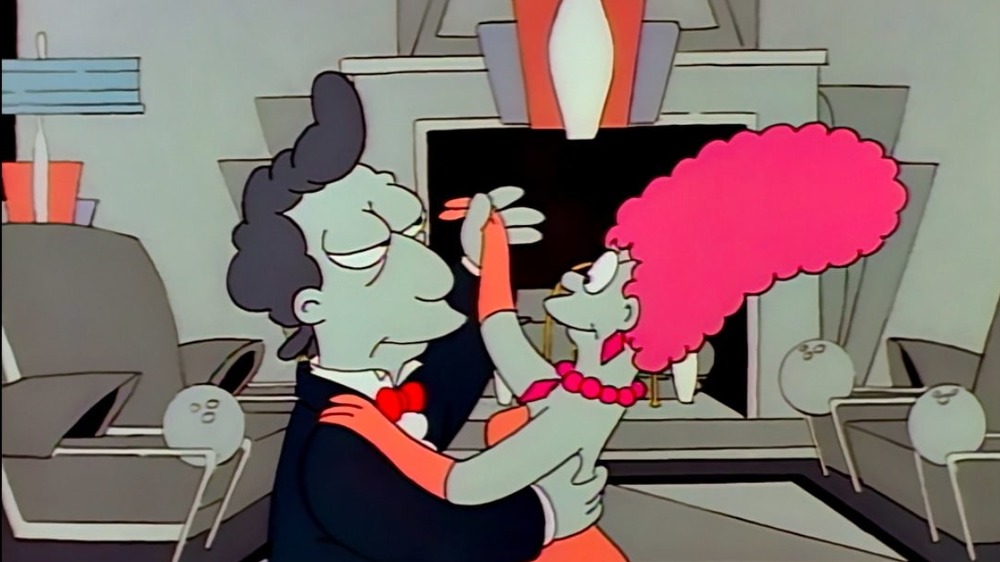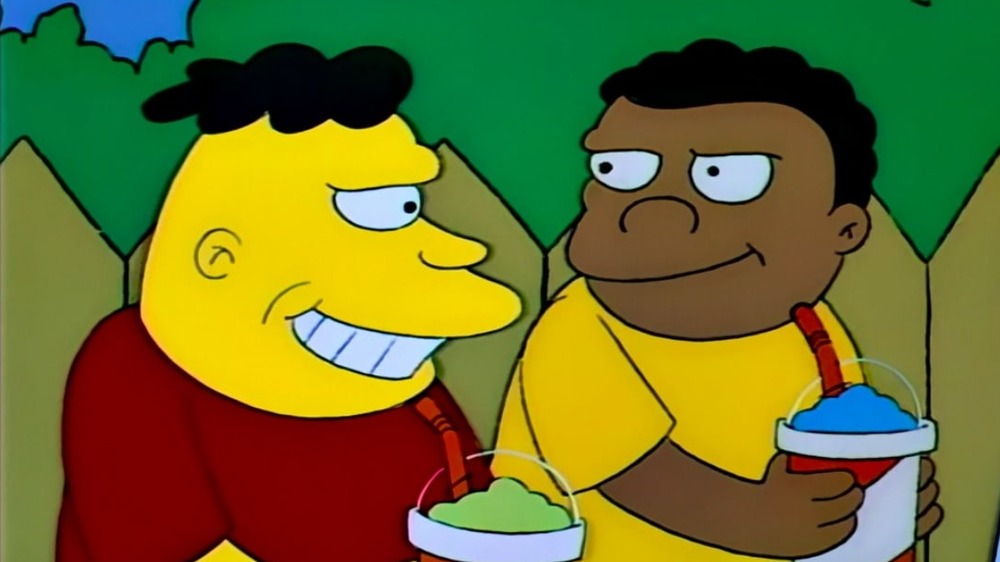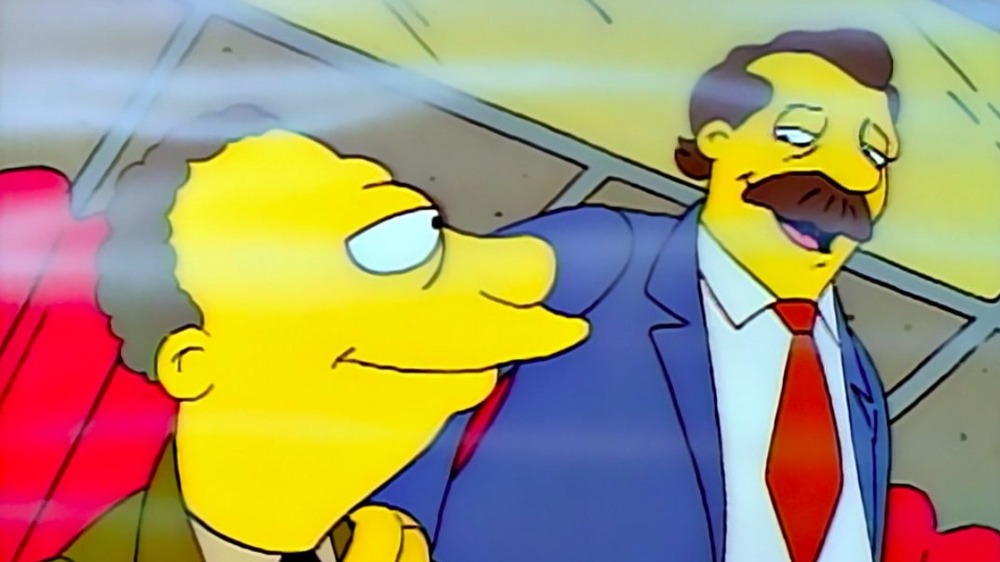Things You Forgot Happened In The Simpsons Season 1
On December 17, 1989, through a charming and somewhat crudely drawn half-hour of television, the world was introduced to the primetime antics of The Simpsons. No longer living within the interstitials of The Tracey Ullman Show, Homer, Marge, Bart, Lisa, and Maggie were now jumping into the '90s with all the heart, humor, and absolute comedic genius that would inspire an entire generation of comedy writers. And little did anyone know that the series would become a long-running TV behemoth, one that would — against all odds — still be running new episodes to this day.
So it's not surprising that season 32 of The Simpsons looks and feels quite a bit different than season 1, but the differences might be even sharper than you remember. After all, the show was still figuring out its identity back in those early episodes, and the things you might've missed paint quite a picture of how far this show has come. So journey back to Springfield as we take a look at the things you forgot happened in season 1 of The Simpsons.
The opening animation has a much different sequence in The Simpsons season 1
There's likely nothing more iconic in the world of The Simpsons than Danny Elfman's theme song, alongside the opening sequence it accompanies, showing us the Simpsons family spread throughout the town of Springfield, gearing us up for the world of familial antics and comedy that will keep us entertained for the next 20 minutes or so. But season 1's title sequence went through a few stages before reaching perfection.
While much of the structure is still the same, you can tell that the animation is still in its rough, early days — a little looser, a little jerkier, even as Homer still drives away from the nuclear plant, Lisa still gets excused from music rehearsal, and Maggie still gets thrown into a grocery bag. But as Bart is skating down the street, instead of racing past a familiar cast of supporting characters, he steals a bus stop sign away from a group of unsuspecting random background characters, all having to chase down the bus that wouldn't slow down for them. It's a charming detail of Bart's antics that would soon fall to the animated wayside in future seasons.
The Happy Little Elves are a core piece of entertainment
Season 1 does a great job of establishing some of Bart, Lisa, and Maggie's favorite entertainment icons, including our first looks at Springfield's favorite tv clown, Krusty the Clown, and everyone's favorite television cat and mouse team that pushes the boundaries of cartoon, Itchy and Scratchy. But a major source of animated joy that's abandoned in later seasons are those delightful green fairy tale creatures, the Happy Little Elves.
A frequent resident of the Simpson's VCR player, the Happy Little Elves are a joyful gang of cartoon elves, something akin to the Smurfs of the Simpsons universe. These little guys provide seemingly hours of entertainment for Lisa and Maggie, much to the consternation of Bart. With their off-kilter animation, high-pitched voices, and exciting adventures like "The Happy Little Elves Meet the Curious Bear Cub," it's a shame that this odd foray into another animated universe failed to gain any real traction in the world of the Simpsons.
Homer tries to kill himself in season 1 of The Simpsons
It can often be surprising seeing some of the deeper, sadder plotlines that come out of season 1 of The Simpsons. Of course, in later seasons, there are still plenty of emotionally resonant stories that show the true beating heart that rests at the center of America's favorite animated family. But there's no denying that the antics of The Simpsons only get wackier as the show goes on, losing some heart in exchange for reality-breaking cartoon mania. That's especially true when compared to an episode like "Homer's Odyssey."
Here, after being fired from his job at the nuclear power plant for reckless endangerment, Homer falls into a major depressive slump and can't seem to find another job. And so, in one of Homer's darkest moments in the series' history, he ties himself to a rock, drags himself to a bridge in the middle of town, and like George Bailey before him, readies himself for the end of his life. Thank goodness the rest of his family is there to save him just in time, causing Homer to reevaluate his life. And through his shift to safety consciousness, he end up rehired at the power plant as their safety inspector.
If you or anyone you know is having suicidal thoughts, please call the National Suicide Prevention Lifeline at 1-800-273-TALK (8255).
Several characters look pretty different
It's certainly not uncommon for animated characters to get something of an update as their look is further solidified. But this usually happens in the development phase for an animated project, not as a series is currently airing on television. But as with much of the animation style of The Simpsons, certain characters just needed a few stabs at their design before cementing their look for the run of the show.
This is super noticeable when there are scenes taking place at Moe's Tavern, where both Moe Szyslak and Barney Gumble seem to have completely different hair styles. Moe has slick, black hair, a sharp contrast to his eventual grey, lived-in hairdo. And then there's Barney with blond hair that practically matches the color of his skin, although it turns brown in later episodes. Alongside Chief Wiggum's early black hair that would quickly change to blue, it seems many a character in the Simpsons universe were having multiple bad hair days in these early episodes.
Homer is embarrassed by the rest of his family.
A frequent theme of later Simpsons episodes is Homer's buffoonish behavior causing great distress to the rest of the Simpson family, with Marge, Bart, and Lisa each finding moments where their apish father's antics would let them down. It's practically a given that in any contemporary Simpsons episode, Homer is the one who's going to make a fool out of the family.
So it's somewhat startling to remember back in the days of season 1, things were a bit different. In the episode "There's No Disgrace Like Home," after attending a family get-together at Mr. Burns' mansion, it's Homer who falls victim to the embarrassment and shame of his fellow Simpsons, with Marge getting drunk on wine and Bart and Lisa causing childhood shenanigans throughout the party. Homer becomes so ashamed that, in an effort to afford group therapy for the family, he's willing to pawn the family television set for the sake of this mission, something that even season 2 Homer wouldn't dare do.
Burns' office is drastically different
Springfield is one of the most iconic towns in TV history. However, in season 1, the designs of the city and its various buildings were still going through something of a test drive to see what would stick and what aesthetics would make sense moving forward for the show. A prime example of this would be the drastic upheaval that seems to take place at the nuclear power plant.
In "Homer's Odyssey," we get our true first look at Mr. Burns, the head of the nuclear power plant who, over the course of the series, would become much more openly villainous, greedy, and pompous. With that character upgrade, his office would have to match it, as is shown here with Burns' season 1 office, practically miniscule compared to his gargantuan, stately office of later seasons, complete with a green and pink color pattern that goes against everything we think we'd identify with this garish character.
Agnes Skinner has a much kinder, sweeter personality in The Simpsons season 1
In season 1 of The Simpsons, it's somewhat startling to get a first glimpse of Agnes Skinner, Principal Seymour Skinner's elderly mother. And why is that? Well, the loud, cantankerous character we all know seems to be nowhere in sight.
Agnes is, instead, fashioned as an archetypical kindly old lady character, embarrassing her son in front of the students by calling him "Spanky," and even making the, as usual, false assumption that Bart Simpson is a good little boy. It's a conclusion that she soon regrets when she falls victim to Bart's cherry bomb prank in the very next scene. Perhaps this was the very catalyst that would turn Agnes from a saint into one of the town's most loud and dissenting voices in future seasons. Nevertheless, it's incredibly weird to see such a cranky character acting this way.
Marvin Monroe has a major presence
The first season introduced us to a wide litany of characters who would soon become mainstays of the Springfield we know and love today. For example, we meet Principal Skinner, Otto, Milhouse, Patty and Selma Bouvier, Abe Simpson, and Kent Brockman. These are just a portion of the soon-to-be hundreds of Springfield denizens who would further populate the comedic minefields of this TV show. But some characters established in this initial outing would fail to make such a lasting impression.
The character who gets one of the biggest pushes with seemingly no love sent back their way would be Dr. Marvin Monroe. He pops up no less than three times throughout season 1, with rarely a comeback appearance throughout the rest of the show's run. In this first season, he's the psychiatrist Homer hopes will "cure" his family, an expert brought in to prove the validity of whether Homer is Bigfoot or not, and the radio jockey who Marge calls to ask for marriage advice. After season 1, though, it seemed like no one in Springfield was calling on this good doctor for any advice.
Albert Brooks makes two cameos
Albert Brooks — famed actor, writer, director, all-around masterful portayor of the droll, sarcastic character wherever he roams — would become a go-to Simpsons mainstay for providing memorable one-off performances throughout the series' gargantuan run. While his most notable performances in later seasons of characters like motivational speaker Brad Goodman and head of the Globex Corporation/almighty supervillain Hank Scorpio won him the most audience acclaim, he got his start in two early season 1 appearances.
First off, in "The Call of the Simpsons," Brooks sneaks in near the top of the episode as Cowboy Bob, owner of Bob's RV Round-up, employing his usual shyster routine to pawn a crummy RV off on the Simpson family. Later in the season, in "Life on the Fast Lane," Brooks practically disappears into the role of Jacques, the French pro-bowler who tries (and thankfully, fails) to seduce Marge with his captivating charm and bowling prowess.
Nelson's sidekicks disappear after The Simpsons season 1
One of the most memorable episodes of the first season would definitely have to be "Bart the General." Here, we witness the original appearance of one of Springfield's toughest school bullies, Nelson Muntz, who beats the ever loving crud out of Bart. This turn of events leaves our favorite skateboarding Simpson with no other choice than to team up with his Grampa, Army vet Herman, and the rest of his perpetually bullied classmates to get their revenge.
But Nelson isn't alone in his bullying efforts. No, here he's joined by two pint-sized characters who are simply known as "the Weasels." Weaselly as they are — and willing to carry out Nelson's doing until the bitter end — they would practically vanish after this season of television, sometimes appearing in background roles when necessary but leaving Nelson pretty much henchman-less in future endeavors.
Homer apparently has an assistant at the power plant (who quickly becomes his supervisor)
In season 1 of The Simpsons, the specifics of Homer's workplace are extremely flexible and up in the air, with not a lot truly set in stone, not even how dedicated he actually is to his job. (Homer would pretty much morph from an incompetent safety inspector to an actively lazy and sluggish one while no one was looking.) This certainly extends to his fellow personnel at the plant ... including the assistant he apparently had at his job?
In "Homer's Night Out," we learn that Homer has an assistant, Eugene Fisk, who he calls a "poor sucker" and who doesn't seem to be a real catch with the ladies. Skip forward six months within the episode, and not only has Eugene become Homer's supervisor within that span of time, but it's his bachelor party that sets the plot of this episode in motion. Still, the idea of Homer ever having an assistant is one we can't imagine playing out in the later seasons of the series.
